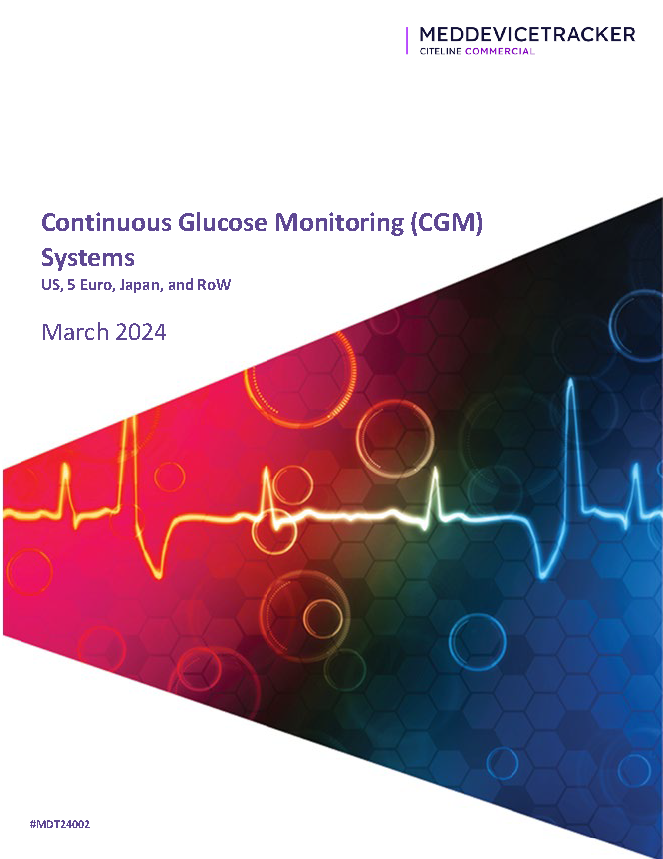Report Detail

Purchase Price: $4,750.00
Continuous Glucose Monitoring (CGM) Systems Market
According to the International Diabetes Federation (IDF), approximately 537 million adults, or 10.5% of the adult population, have diabetes worldwide. This number is expected to rise to approximately 643 million by 2030 and 783 million by 2045. Approximately 90% of this population has type 2 diabetes, and approximately 240 million people are undiagnosed.
Diabetes mellitus is a group of chronic endocrine disorders characterized by high blood glucose or hyperglycemia due to impaired insulin production or utilization. Glucose is the body’s primary source of energy. Insulin is an important hormone manufactured by the pancreas that helps regulate blood glucose levels to keep them in a healthy range.
When blood glucose levels are too high or low (in hyperglycemia and hypoglycemia, respectively), it can result in potentially serious consequences. Prolonged hyperglycemia can affect the eyes, blood vessels and heart, kidneys, and nerves, leading to blindness (diabetic retinopathy), cardiovascular disease (heart disease/stroke), depression, kidney failure, neuropathy, amputations, and other complications. Hypoglycemia can result in numerous complications as well, including fainting, seizures, coma, or death upon severe lows.
A major goal of people with type 1 diabetes (and those with type 2 diabetes taking insulin) is to achieve tight blood glucose levels or improve the “time-in-range” (TIR; defined as the optimal glycemic range of 70–180mg/dL) and lower hemoglobin A1c (HbA1c or “A1c”) via aggressive blood glucose monitoring. To do this, many people are using wearable sensor-based continuous glucose monitoring (CGM) systems, such as the increasingly popular FreeStyle Libre 3 and Dexcom G7 systems, versus having to use cumbersome and painful fingerstick-based standard blood glucose meters (BGMs). CGMs are small, disposable sensors attached to a person’s upper arm or abdomen that monitor blood glucose levels 24 hours a day and are paired with a handheld reader or smartphone that receives the data and instantly displays glucose readings. These CGMs also provide critical alerts of impending “highs and lows,” visual trends, and coaching advice that has been clinically proven to improve glycemic control, lower diabetes complications, and improve quality of life.
Due to numerous benefits, the burgeoning, multi-billion CGM market is one of the highest-growth medical device markets in the world today. Global sales of CGM systems and related products totaled an estimated $7.7bn in 2022. Sales are forecast to grow at a stellar double-digit rate, more than tripling by 2028.
Market drivers include: an extremely large and underpenetrated market, technical improvements, expanding indications, lucrative repeat sales from disposable sensors, increasing awareness due to aggressive advertising and marketing campaigns, expanding reimbursement, a solid clinical profile and proven ability to improve diabetes outcomes, increasing physician referrals, new technological innovations, including the launch of next-generation CGMs and consumer biosensors, and other factors.
This analysis includes a discussion of products, current revenues and forecast markets, competitors, and opportunities in the global market for CGM systems; revenues include sales of CGM systems, including lucrative disposable sensors, transmitters, inserters, overpatches, handheld readers, software apps, and accessories. Countries covered by this report include the US, five major European markets (France, Germany, Italy, Spain, and the UK), Japan, and the Rest of World. The forecast range for this report is 2022–28.
If you are not a subscriber to Meddevicetracker and would like to purchase this report, please send an email to [email protected]. If you would like more information about obtaining a subscription to the Meddevicetracker database and report library, please send an email to [email protected].
Related Medtech Insight articles:
- Abbott-Lingo-Leaders-On-Consumer-Biowearable-Outlook-A-Lot-Of-Appetite-For-Glucose-As-A-Biomarker-For-Your-Health
- Dexcom COO on Stelo CGM Plans
- JPM 2024: Dexcom Touts Strong Results, Speaks On New Stelo Glucose Sensor
Subscribe to Medtech Insight to view these articles and more!
